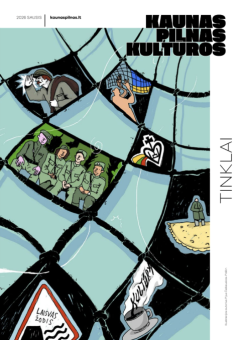Over the last few years, I have visited many impressive buildings in Kaunas. From the house designed by the famous architect Edmundas Alfonsas Frykas on Gedimino Street to the administrative building of the Pienocentras or Kaunas Central Post Office. But there was one thought that kept popping in my mind: will I ever get lost in the corridors of the Bank of Lithuania located on Maironio Street?
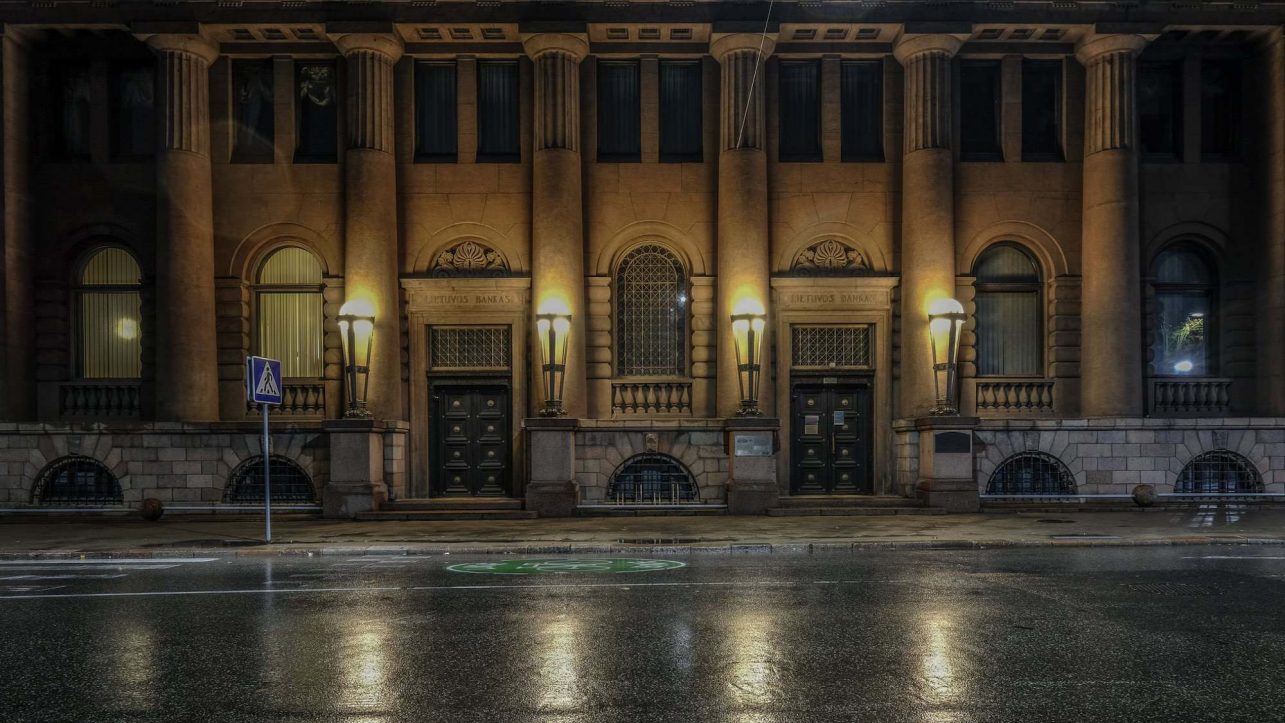
And I was lucky. This year the Bank of Lithuania, celebrating its centenary, opened a unique historical palace to the public. Impressive neoclassical architecture, the apartment of the former Prime Minister Augustinas Voldemaras, The Bank of Lithuania Money Museum’s exhibitions, and Yoko Ono’s installation Ex It, which is exhibited here temporarily. All this is only a small part of what Rūta Kupraitienė, a specialist at the Money Museum, showed me during the meeting.
As soon as I opened the big door of the Bank of Lithuania, I was taken over by a sense of grandeur. I immediately wondered how a peasant, who had opened the same door a hundred years ago to exchange a few banknotes, felt. There are so many unique details in every corner of the building that it was unclear what to look at first and where to begin.
“This palace is the very first building of the Bank of Lithuania, the house of litas. It was the pride of the Lithuanian elite. Part of society did not like it very much, and part was happy and claimed that Kaunas, as a temporary capital, must have such a palace””, Rūta told me, after welcoming me at the door.

And indeed, it must have. Kaunas, being part of Tsarist Russia, was a really small city at the beginning of the 20th century, so when it became a temporary capital, it faced a lack of imposing and representative buildings. “The Bank of Lithuania was established in 1922, and this building did not exist at that time. It was temporarily housed in the building of the Kaunas branch of Tsarist Russia’s state bank, but the government refused to hand over or transfer those premises, so it was decided to organize the construction of a new building. The tender for construction was international with architects from Germany and France. The first prize was won by an architect from Paris, but his name is unknown. The building he designed was very modern, complex, and expensive, so it was decided to make some adjustments to the project. Architect Mykolas Songaila, the chairman of the tender committee, took this task upon himself,” the specialist of the Money Museum said.
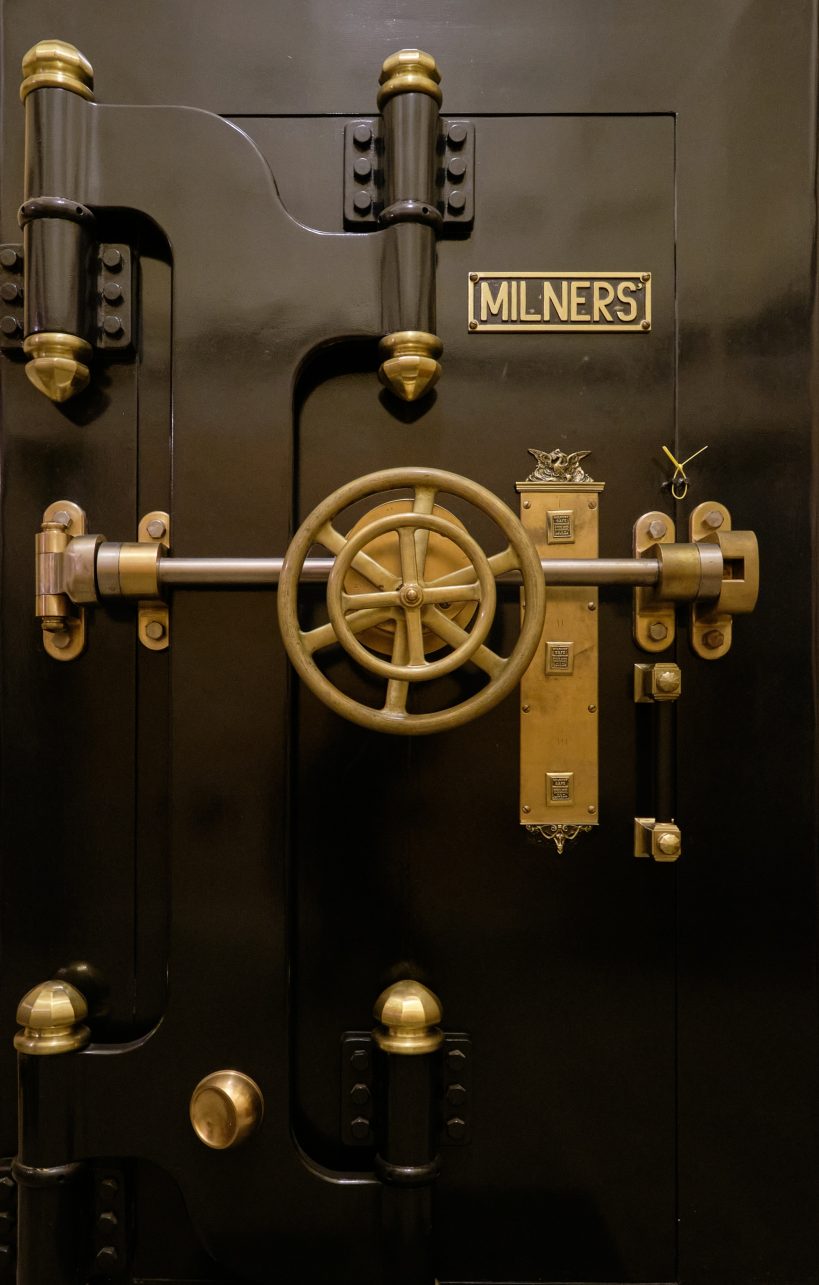
The construction of the Bank of Lithuania started in 1925 and it launched its operations in December of 1928. Imagine, it took three and a half years to build and equip such a magnificent palace. It is said that this building was undoubtedly one of the most beautiful in Lithuania at that time; not a single building in Kaunas matched it. As Rūta mentioned, nothing matched the materials used, technologies, or artworks either, “In fact, the Bank of Lithuania was as impressive as those financial buildings that were located in London, Amsterdam or New York. It became an example of how beauty was perceived at the time. Luxury building materials, artificial and natural marble, granite, and even 137 movable valuables were used: chandeliers, paintings, and different furniture. At that time, no one even made crystal chandeliers in Lithuania, they were only imported. I am most pleased that everything in this building has remained authentic so far, even after the restoration.”
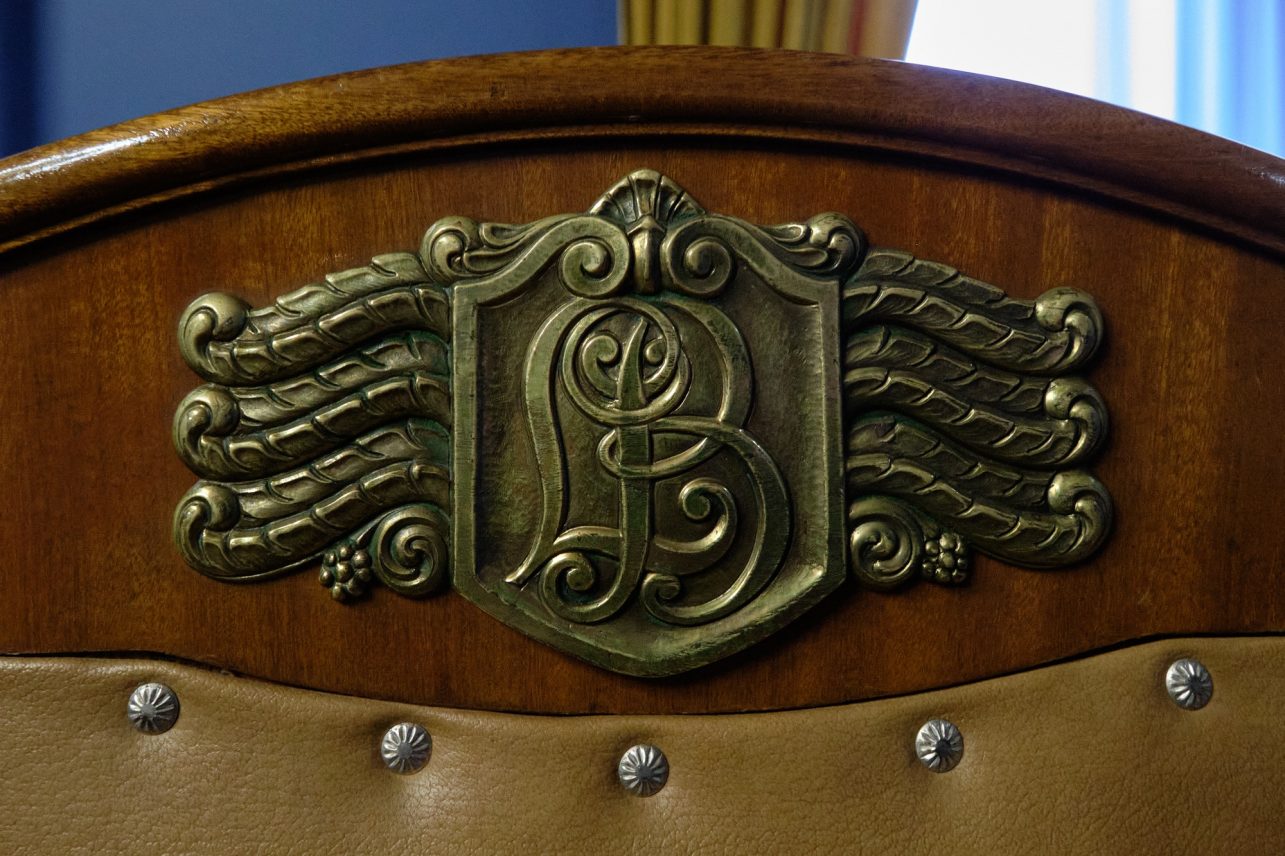
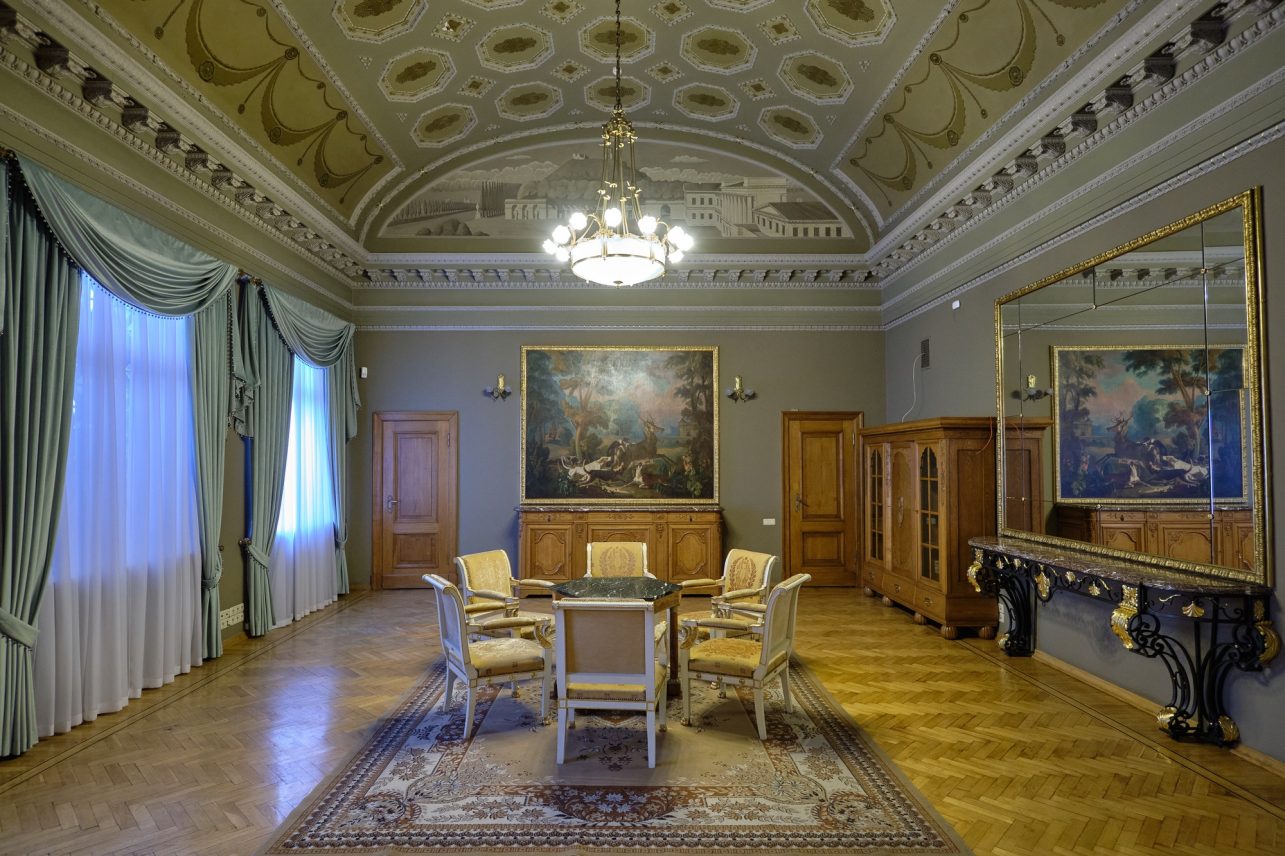
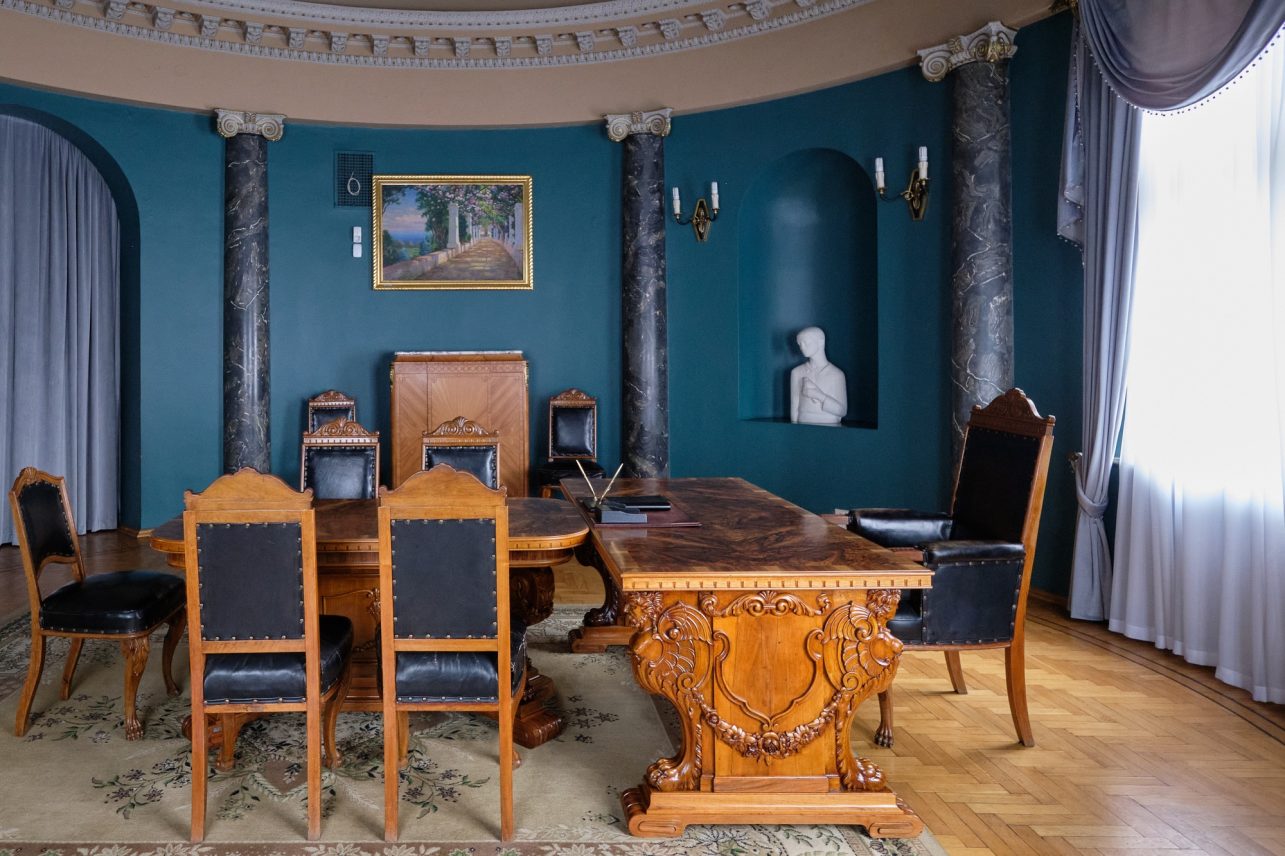
The palace, which has become one of the best examples of neoclassical style not only in Kaunas but also in the whole of Lithuania, continues to amaze me. A huge rectangular hall that provides a sense of tranquility is still designed for customers. Currently, only two teller windows are working, but during the interwar period, when the Bank of Lithuania provided the services of a commercial bank, there were as many as 24. “This hall was always full of people. They came here for different banking operations. And not only from Kaunas, but also from districts and surrounding villages. People came to either put their money, withdraw or exchange. One could also rent an individual safe. There are storage rooms underneath the main hall where people were able to keep their valuables. At present, the Bank of Lithuania only provides services of the central bank: it is possible to exchange litas into euros for an indefinite period of time, to break money, or exchange smaller currency for larger denominations, and to purchase a collector coin.
If Yoko Ono’s installation Ex It would not be here, upon entering the main hall, the visitors would be greeted by massive and luxurious benches and in the morning, a buffet that was open daily for three to four hours. The queues at the bank were very long, there were a lot of customers, so it was possible to buy a donut and drink coffee or tea while waiting for your turn,” the employee of Money Museum explained.
The interior of the Bank of Lithuania is decorated with many paintings. Going up the stairs to the second floor, they accompany you every step of the way. “We have acquired this nickname of Little Louvre because there are many paintings by famous artists in the building. The first bankers valued art a lot, it was used to create a certain image, to show off to the customer.” The second floor was also open to the public so everyone could admire the paintings. While waiting to be invited to the banker’s office, visitors visited the exhibition. Maybe it is not a bad reason for visiting a bank.
An authentic conference room of the bank’s council and board was located near the offices. “It is still used for its original purpose. Meetings or training take place there. Lecturers often say that they have never worked in such a luxurious environment before. The furniture is authentic, made in Klaipėda furniture factory. Among 12 smaller chairs there are two made to order, with bronze plates of the Bank of Lithuania on the chairs. These two chairs were dedicated to the bank’s heads: Vladas Jurgutis, director or president,” Rūta said while showing around the breathtakingly beautiful space.
Wow. That is the only word that came out when I entered Vladas Jurgutis’ – the head of the Bank of Lithuania – office, which is also locates on the second floor. At that time, the most popular details in architecture were curved walls and windows, marble windowsills, and oak windows. All the above-mentioned details – as well as my amazement – were repeated in the office of Prime Minister Augustinas Voldemaras located on the third floor. The office window provides the view of Donelaičio and Maironio streets. “A. Voldemaras’ office was installed in the corner of the third, attic floor, facing Maironio Street. It is elliptical in shape, with an 8-meter-high dome decorated with coffers and rosettes. Also pay attention to the doors, each of them is very nicely decorated and authentic. I will not hide, I was a bit scared that after the renovation all this beauty will disappear, but the repairs were very strictly supervised by the commission. The goal was to keep the original colors and forms,” Rūta, who knows the building well, told us.
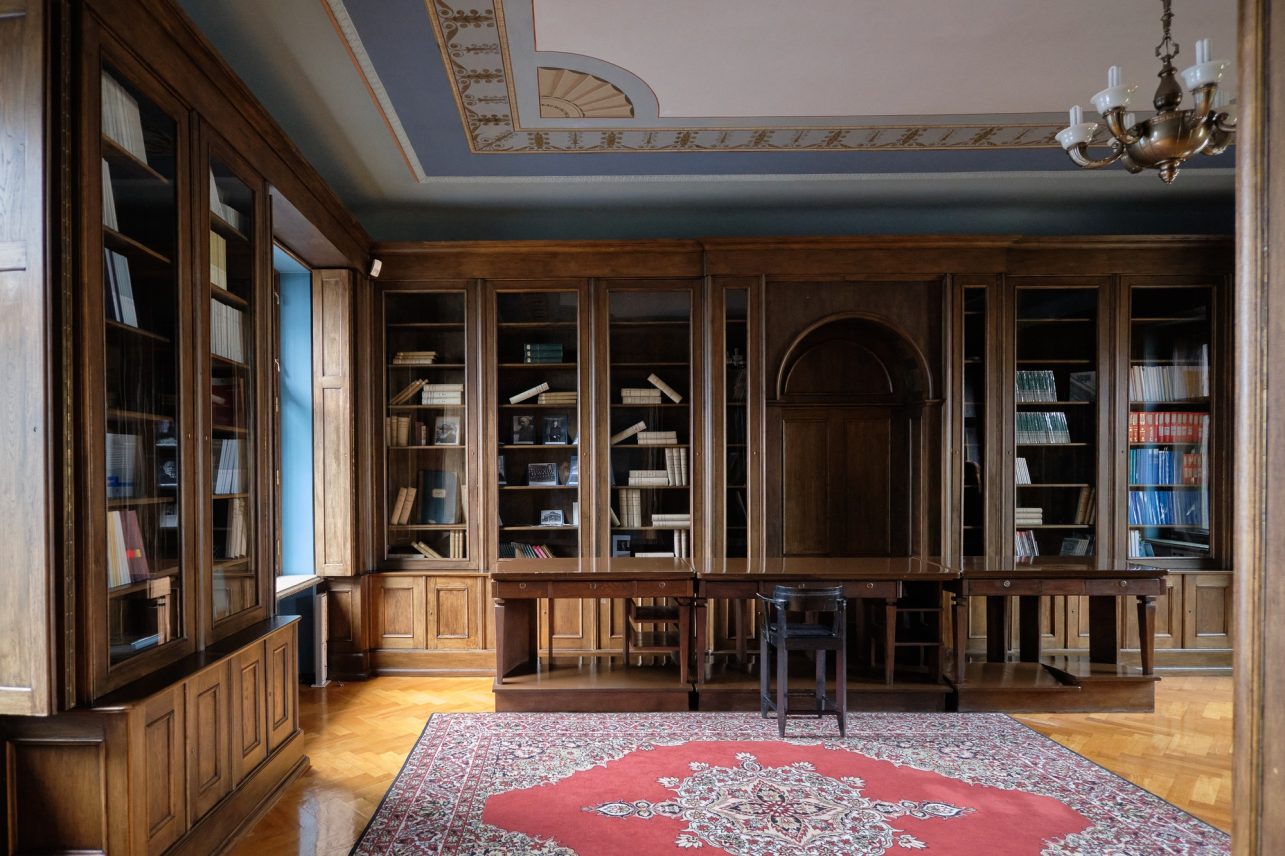
It is also interesting that this building is related not only to the history of the Bank of Lithuania, but also to politics. My guide mentioned that the prime minister of the time A. Voldemaras, who was rather a celebrity in the interwar period politics, not only had his office here but also an apartment. “When constructing modern buildings, additional amenities were also considered, which is why Voldemaras was housed on the third floor of the Bank of Lithuania. He lived in an eight-room apartment with an antechamber, a library, formal reception hall, a separate front entrance, an elevator, and emergency stairs. The apartment was accessible through metal and wooden doors that were not only soundproof but also fireproof. It is perhaps important to mention that the elevator installed in the building was one of the first in Kaunas.
The controversial prime minister was fired in the fall of 1929 and had to leave the apartment, but he did not want to move, the police had to intervene. Newspapers at the time wrote that they managed to evict him a year later. Later, he was staging a coup underground. But this is a different story, albeit as interesting.
In addition to the impressive beauty of A. Voldemaras’ apartment, there were also guest rooms on the third floor. The Lithuanian elite, city’s cream of the crop gathered here, and different parties were held. The guests were greeted by musicians on the balcony or in an orchestra pit. “The party musicians used the stairs from the corridor to go up, where they performed different musical works, so you could always hear live music there. The sculptural and painterly decor by Petras Kalpokas and Vladas Didžiokas, ornate chandeliers, furniture of various styles – many of which are now recognized as cultural heritage – always caught the visitor’s eye,” Rūta said.
The last stop of the Bank of Lithuania tour, as it should be, is made in the calmest room of the building: the library, where an authentic set of oak wall cabinets has survived to this day, enveloping almost the entire room. Unfortunately, we couldn’t have the full impression because the bookshelves are currently half empty, “We no longer have the books of Voldemaras’ library. When he was evicted, the books were taken away, we do not know what happened to them. He was a very educated person, had a good memory, was very eloquent, knew six foreign languages. It is estimated that he kept as many as 15,000 books in this library.
It is rather impossible to dismantle or change anything here. As long as this building stands, there will be a library in it. What we managed to do was to restore the true color of the natural wood of the cabinets, which was painted black in Soviet times. I feel so happy about the revived original colors,” the interviewee admitted.
The Bank of Lithuania started its activities on October 2, 1922. This year, until the aforementioned date, tours, exhibitions, conferences, open doors days will be held in this Kaunas’ palace, and collector coins dedicated to this occasion will be issued.
You can book a tour on the website of the Bank of Lithuania Money Museum. They are held from Tuesday to Friday in Lithuanian, English and Russian. All tours are free of charge.
Part of the Kaunas 2022 program, Yoko Ono’s installation Ex It, organized by Contemporary Art Center will run until September 11. You can visit it during the working hours of the Bank of Lithuania (Mondays-Wednesdays from 8.30 a.m. to 3.30 p.m., Thursdays until 6 p.m., Fridays until 2.30 p.m.).
